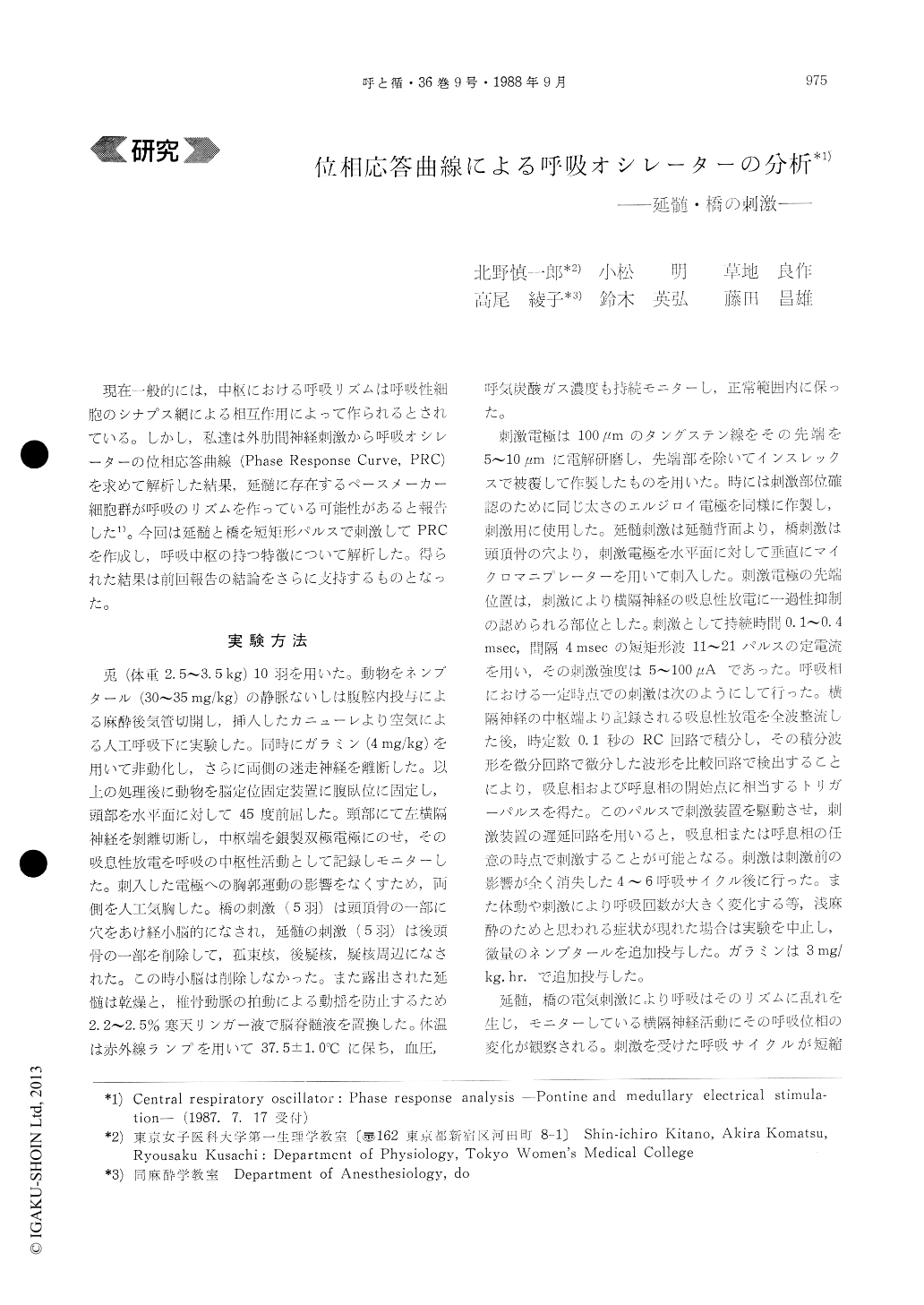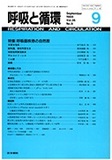Japanese
English
- 有料閲覧
- Abstract 文献概要
- 1ページ目 Look Inside
現在一般的には,中枢における呼吸リズムは呼吸性細胞のシナプス網による相互作用によって作られるとされている。しかし,私達は外肋間神経刺激から呼吸オシレーターの位相応答曲線(Phase Response Curve, PRC)を求めて解析した結果,延髄に存在するペースメーカー細胞群が呼吸のリズムを作っている可能性があると報告した1)。今回は延髄と橋を短矩形パルスで刺激してPRCを作成し,呼吸中枢の持つ特徴について解析した。得られた結果は前回報告の結論をさらに支持するものとなった。
In anesthetized and paralyzed rabbit with bilate-ral thoracotomy and vagotomy, a phase response curve (PRC) was obtained by stimulation of medul-lary and pontine regions with short train pulses du-ring inspiration (I) and expiration (E). A relation between phase shift, advance or delay, and the rela-tive timing of stimulation in one cycle is called a PRC2).
Stimulation of the vicinities of the nuclei tractus solitarius, retroambiguus and ambiguus produced si-milar PRCs. The PRCs showed premature termina-tion of I and continuous transitions from I to E and from E to I. Three types of PRCs were obta-ined by stimulation of the vicinity of the nucleus parabrachialis medialis. In type A, premature ter-mination of I was observed. In type B, stimuli indu-ced premature termination of E. In type C, prema-ture termination of I as well as of E was shown. At the transition from I to E, PRCs were continu-ous in type A and C, but not in type B. At the transition from E to I, PRCs were continuous in type B and C, but not in type A. In one PRC of type B, the duration of E was not affected by that of the preceding I whereas the duration of E was affected that of the succeeding I. The findings can be regar-ded that one respiratory cycle is a process which starts from the onset of E and terminates at the end of I. From the findings by stimulation of the afferent intercostal nerve, thereby evokes only I-E switching, in our previous report1), it is reported that one res-piratory cycle is a process which startrs from the onset of I and terminates at the end of E. Therefore, it can be suggested that respiratory oscillators con-tain two mechanisms regulating the processes. These suggestions would support our hypothesis that ex-piratory pacemaker neuron group as well as inspira-tory pacemaker neuron group would participate in respiratory rhythm generation.

Copyright © 1988, Igaku-Shoin Ltd. All rights reserved.


